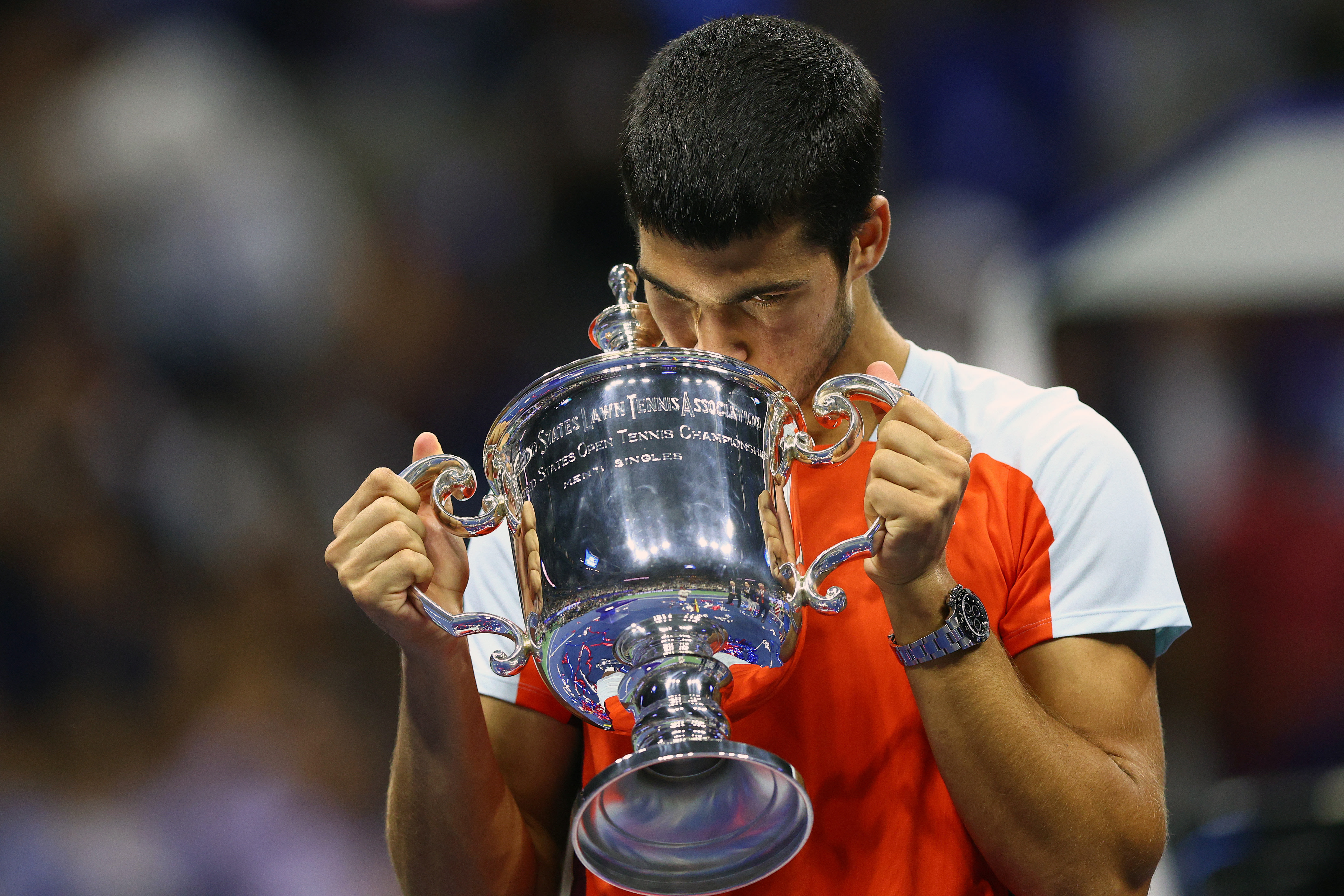
The turning point, Alcaraz would later reveal, came during the Miami Open.
“Before Miami, I was thinking that I have to still grow up,” Alcaraz reflected. “I thought that I’m able to have good results in a Grand Slam, but not a champion.
“But I would say after Miami, I thought that I’m able to win a Grand Slam.”
Alcaraz had to go through Marin Cilic, Stefanos Tsitsipas and defending champion Hubert Hurkacz just to reach his first ATP Masters 1000 final, before defeating Ruud in two sets. With the Miami victory sending the Spaniard to world No. 11, it was time for Team Alcaraz to adjust its targets. After all, if you can win six matches in a row against the world’s best, why not seven?
In Barcelona, Alcaraz became the youngest player since 18-year-old Rafael Nadal in 2005 to break the Top 10. Not one to shy away from comparisons to his childhood idol, Alcaraz seemed to delight in driving them home as he defeated Pablo Carreño Busta to win the title—he achieved the rankings milestone at the same tournament, on the same date (April 25) and in the same way, by defeating a countryman in the final.
In Nadal’s case, that had been Ferrero, who now coaches Alcaraz.
“I still don’t want to touch the ceiling—I don’t want to put limits on myself,” the teenager said after the final.
And just as well; a week later, he would defeat Nadal, oust Novak Djokovic and turn 19 on his way to another 1000-level title in Madrid.

